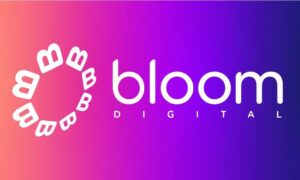A breakthrough AI system could transform millions of lives—and reshape an entire industry worth more than most countries’ GDP
In an era where healthcare costs are bankrupting families and overwhelming nations, a team of researchers has just delivered what might be the most important medical breakthrough of the decade. Their weapon? Artificial intelligence that can predict glucose responses with 92% accuracy—and it all starts with a simple smartphone photo.
830 million people worldwide are living with diabetes, and the current management systems are failing them spectacularly.
The numbers alone should terrify any business leader: $2.2 trillion. That’s what diabetes will cost the global economy by 2030—more than the GDP of India, the world’s fifth-largest economy. In the United States alone, diabetes drains $327 billion annually from an already strained healthcare system. For context, that’s more than the market cap of Coca-Cola and McDonald’s combined.
But these amazing professionals—Arjun Jaggi, Sonam Naidu, Aditya Karnam Gururaj Rao and Dr. Vijay Mane —saw something others missed: an opportunity disguised as a crisis.
Th Trillion-Dollar Blind Spot
Here’s what most people don’t understand about Type 1 diabetes: it’s not just a medical condition—it’s a 24/7 business operation running inside someone’s body, with stakes higher than any Fortune 500 company. Make the wrong decision about insulin dosing, and you’re not just looking at poor quarterly results; you’re looking at serious health issues.
Traditional diabetes management is like trying to run Amazon with a calculator and a notepad. Patients manually track food intake, guess at carbohydrate counts, and hope their insulin timing aligns with their body’s unpredictable glucose responses. The failure rate is staggering: most diabetics struggle with glucose control, leading to complications that cost the system billions.
The incidence of Type 1 diabetes among young adults has jumped 42% since 1990—from 7.78 to 11.07 per 100,000 population. We’re not just facing a medical emergency; we’re staring down an economic catastrophe that’s growing exponentially.
Enter The Game Changers
What this team accomplished reads like science fiction, but the results are brutally real. They’ve created an AI system that combines computer vision with machine learning to predict glucose responses with 92% accuracy in food identification and 85% accuracy in portion estimation.
Think about that for a moment: your smartphone camera just became more accurate at managing diabetes than most endocrinologists.
But here’s where it gets really interesting from a business perspective. This isn’t just another healthcare solution—it’s a complete paradigm shift that could revolutionize how we think about chronic disease management.
The system works like this: snap a photo of your meal, and within seconds, advanced algorithms analyze not just what you’re eating, but how your unique metabolism will respond. The AI has been trained on comprehensive datasets and can predict glucose patterns with an R² correlation of 0.87—a statistical language for “scary accurate.”
The Economics of Disruption
Let’s talk numbers that matter to shareholders and healthcare executives:
Cost Reduction Potential:
- 40% reduction in physician visits for routine diabetes management
- 25-30% decrease in diabetes-related complications
- $50-100 billion in U.S. healthcare savings over the next decade
- Elimination of the $3 billion annual market for manual glucose monitoring supplies
Market Creation: This isn’t just about saving money—it’s about creating entirely new markets. We’re looking at the birth of a $10+ billion industry in AI-powered chronic disease management, with applications extending far beyond diabetes.
Global Scalability: Here’s the kicker: because the system runs on smartphones, it can instantly reach the 2.6 billion people in developing countries who have mobile phones but limited access to specialists. This isn’t just about better healthcare—it’s about democratizing advanced medical care on a scale never seen before.
The Competitive Landscape Just Shifted
Traditional players in the diabetes management space—companies like Medtronic, Dexcom, and Abbott—should be paying very close attention. This research suggests that the future belongs to software, not hardware.
While these companies have spent billions developing sophisticated glucose monitors and insulin pumps, the team has shown that a smartphone and some brilliant algorithms might deliver better results at a fraction of the cost.
The implications are staggering:
- CGM device manufacturers may see their hardware advantage evaporate
- Pharmaceutical companies could face pressure on insulin pricing as precision dosing reduces waste
- Healthcare systems might finally have a tool to manage chronic disease proactively rather than reactively
The Data Goldmine
But here’s what really gets my attention as someone who covers technology and business: the data implications. This system doesn’t just manage diabetes—it creates an unprecedented dataset of real-world glucose responses, food interactions, and metabolic patterns.
The research already shows fascinating insights:
- 42% higher glucose variability in morning meals compared to afternoon
- 28% reduction in glucose variability with high-protein meals
- Massive inter-individual differences despite similar food intake
This data is worth its weight in gold to pharmaceutical companies, food manufacturers, and healthcare providers. We’re talking about insights that could reshape how we develop medications, design foods, and structure healthcare delivery.The Opportunity
For leaders paying attention, this represents a generational opportunity. We’re looking at technology that could:
- Capture a significant portion of the $50+ billion diabetes care market
- Create new revenue streams in AI healthcare applications
- Enable subscription-based chronic disease management platforms
- License technology to existing healthcare companies seeking competitive advantage
The beauty of this approach is its asset-light scalability. Unlike traditional medical device companies that require massive manufacturing investments, this solution can scale through software—with margins that would make any SaaS executive weep with joy.
The Bigger Picture
But let’s zoom out for a moment. This research represents something bigger than diabetes management—it’s a preview of medicine’s AI-powered future. The same principles could apply to:
- Cardiovascular disease management through lifestyle prediction
- Mental health monitoring through behavioral pattern analysis
- Critical treatment optimization through personalized response modeling
- Aging intervention through comprehensive biomarker tracking
We’re witnessing the birth of truly personalized medicine, where treatment isn’t based on population averages but on individual biological signatures analyzed in real-time.
The Global Imperative
From a geopolitical perspective, this technology could be transformative for developing nations struggling with the dual burden of infectious diseases and rising chronic conditions. Countries like India, China, and Brazil—which together account for over 50% of the world’s diabetics—could leapfrog traditional healthcare infrastructure by deploying AI-powered management systems.
The strategic implications are profound:
- Nations with better AI healthcare capabilities will have healthier, more productive populations
- Healthcare will become a key component of national competitive advantage
- The countries that develop and deploy these technologies first will dominate the global health economy
The Verdict
Jaggi, Naidu, Rao, and Dr. Mane haven’t just published another research paper—they’ve lit the fuse on a revolution that could reshape one of the world’s largest and most dysfunctional markets.
The diabetes epidemic is growing faster than our ability to treat it with traditional methods. But artificial intelligence might just level the playing field, turning smartphones into medical devices more powerful than anything in most hospitals today.
For investors, entrepreneurs, and healthcare leaders, the message is clear: the future of chronic disease management isn’t happening in some distant tomorrow—it’s happening right now, driven by four brilliant minds who saw a $2.2 trillion problem and decided to solve it.
The revolution in diabetes care has begun. The only question is whether you’ll be part of it—or disrupted by it.
About This Research: The breakthrough study “Automated Analysis of Glucose Response Patterns in Type 1 Diabetes Using Machine Learning and Computer Vision” was published in the International Journal of Advanced Computer Science and Applications (IJACSA), Volume 16, Issue 5, 2025.



































